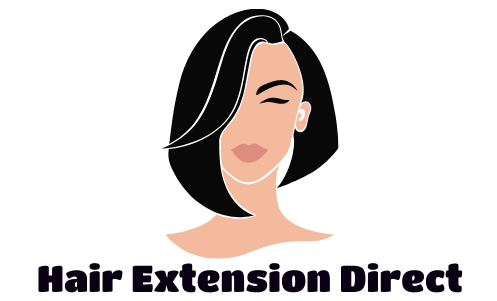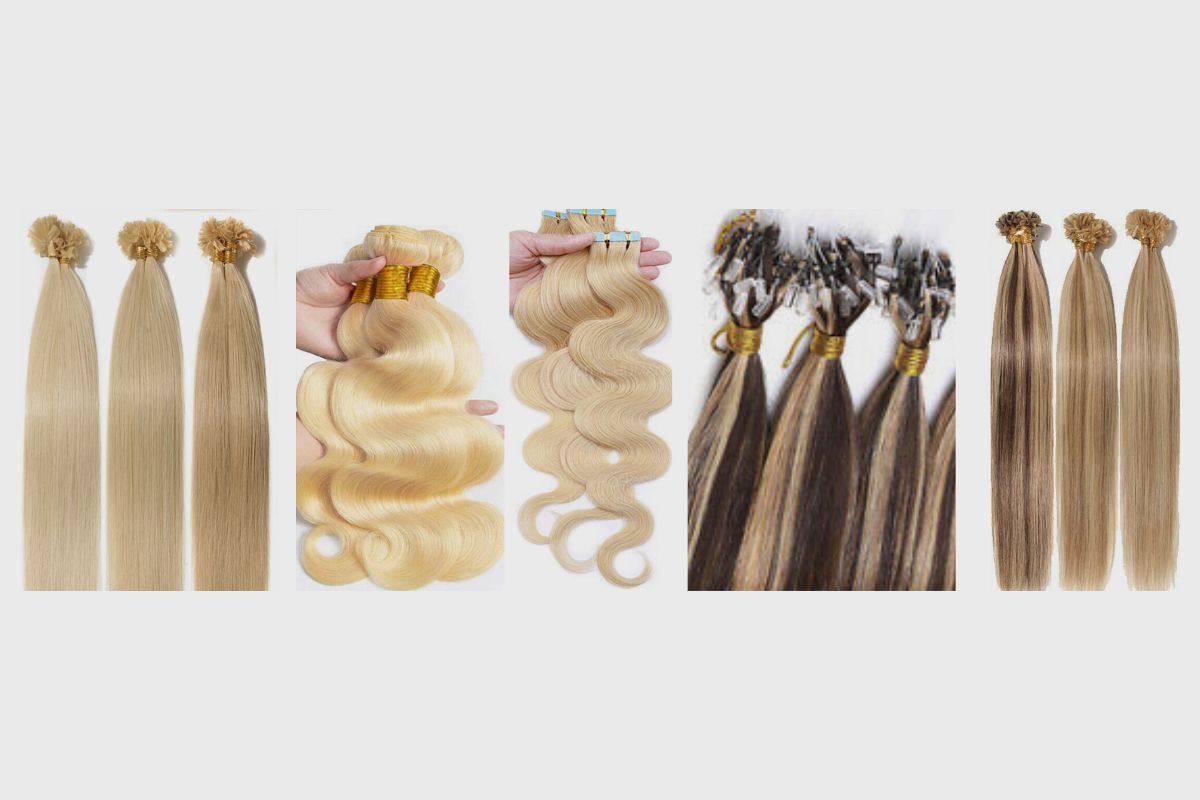If you’re interested in learning about hair extensions, their usefulness and how they can benefit your hair, then you’ve found the perfect resource. In this blog post, I’ll discuss the different types of hair extensions available, the application process, and the pros and cons of each.
By the end of your reading, you will have a comprehensive understanding of what hair extensions are, the various types to choose from, and what to consider when deciding which is suitable for you.
- A Brief Overview Of Hair Extensions
- Purpose And Benefits Of Hair Extensions
- Importance Of Selecting The Right Type Of Hair Extension
- 1. Clip-in Hair Extensions
- 2. Tape-in Hair Extensions
- 3. Sew-in Hair Extensions (Weaves)
- 4. Fusion Hair Extensions
- 5. Micro-link Hair Extensions
- Conclusion
-
FAQs – Frequently Asked Questions about Types of Hair Extensions
- Q: What are some common types of human hair extensions?
- Q: How can I make my finer hair thicker using extensions?
- Q: What are pre-bonded hair extensions?
- Q: Can synthetic hair extensions cause scalp irritation?
- Q: What are the pros and cons of using synthetic hair extensions?
- Q: What are tape extensions, and how are they applied?
- Q: Can hair extensions contribute to hair loss?
- Q: What are the benefits of Luxy Hair Extensions?
- Q: How are individual bonds and fusion bonds different?
- Q: Are there specific shampoos or styling products recommended for hair extensions?
- Q: What is the difference between weft hair extensions and individual strand extensions?
- Q: Can hair extensions be used for shorter hairs?
- Q: Are there temporary forms of hair extensions?
- Q: What is Remy's hair?
- Q: What are the benefits of using natural hair extensions over synthetic ones?
- Q: What are micro loop hair extensions?
- Q: How are hair colours determined for hair extensions?
- Q: What is a halo hair extension?
- Q: Can curly hair be used with extensions?
- Q: How does the quality of extensions affect hair health and growth?
- Image Gallery – Types of Hair Extensions
Related Post: What Are Human Hair Extensions Made Of?
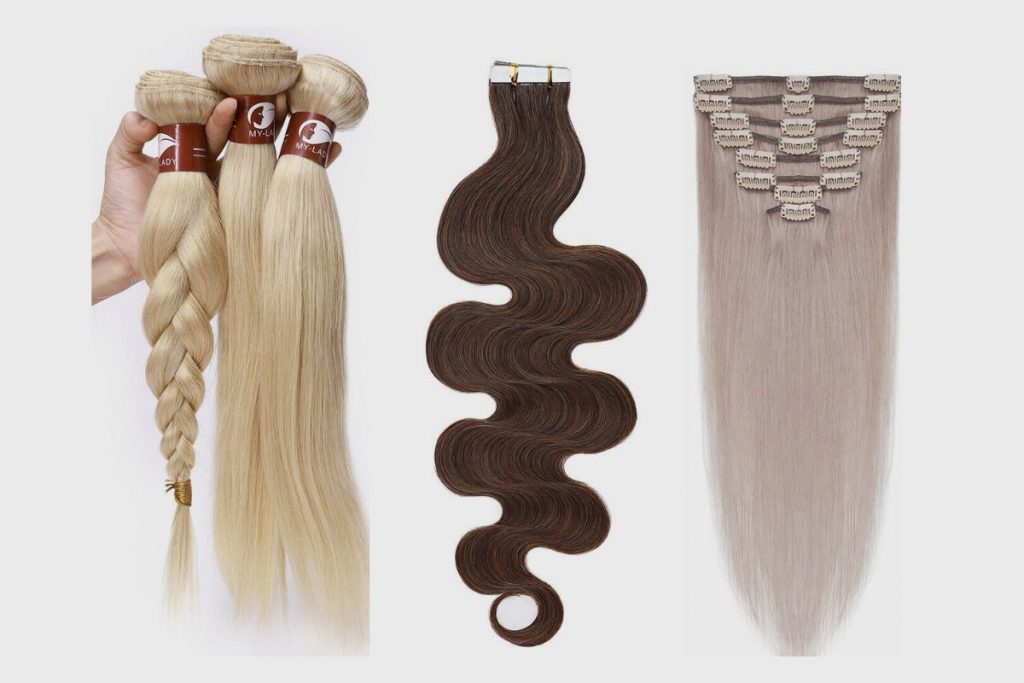
A Brief Overview Of Hair Extensions
Over the years, hair extensions have become popular amongst many people looking to increase the volume and length of their natural hair. So what exactly are these hair extensions? Simply put, hair extensions are attachments to your natural hair.
They can be in the form of human or synthetic hair, and the best part is that they can be blended seamlessly into your hair to give a more natural look. However, with proper maintenance, human hair extensions can last longer than synthetic extensions.
Using hair extensions is the best-known way to add volume and length to your hair. There are hair extensions for different hair types, so you don’t need to worry about your hair’s length or texture – there’s certainly a hair extension that will work for you.
Purpose And Benefits Of Hair Extensions
Hair extensions serve various purposes and offer numerous benefits; however, their main goal is to offer length and volume to people looking for longer and fuller hair.
But it does not even stop there – the fact that these extensions are versatile and can be styled in different ways makes them even more beneficial for those who enjoy getting creative with their hairstyles.
Moreover, if you’re considering dying your natural hair but are worried about the damage it could cause, hair extensions can give you a chance to try out different colours and highlights for your desired look.
Importance Of Selecting The Right Type Of Hair Extension
Contrary to certain schools of thought that selecting the right type of hair extension is a difficult task, I must assure you that it isn’t, provided you have an understanding of your hair type and texture. Choosing the right type of extension for your hair is important for several reasons.
For one, you wouldn’t want your hair extension to look mismatched with your natural hair. By selecting the right type, you get a seamless blend that leaves people wondering.
More importantly, choosing the right type of hair extension will allow you to wear it for a long time without feeling discomfort or strain on your natural hair.
Also, when you choose the right type of hair extension, you can get creative and achieve your desired style.
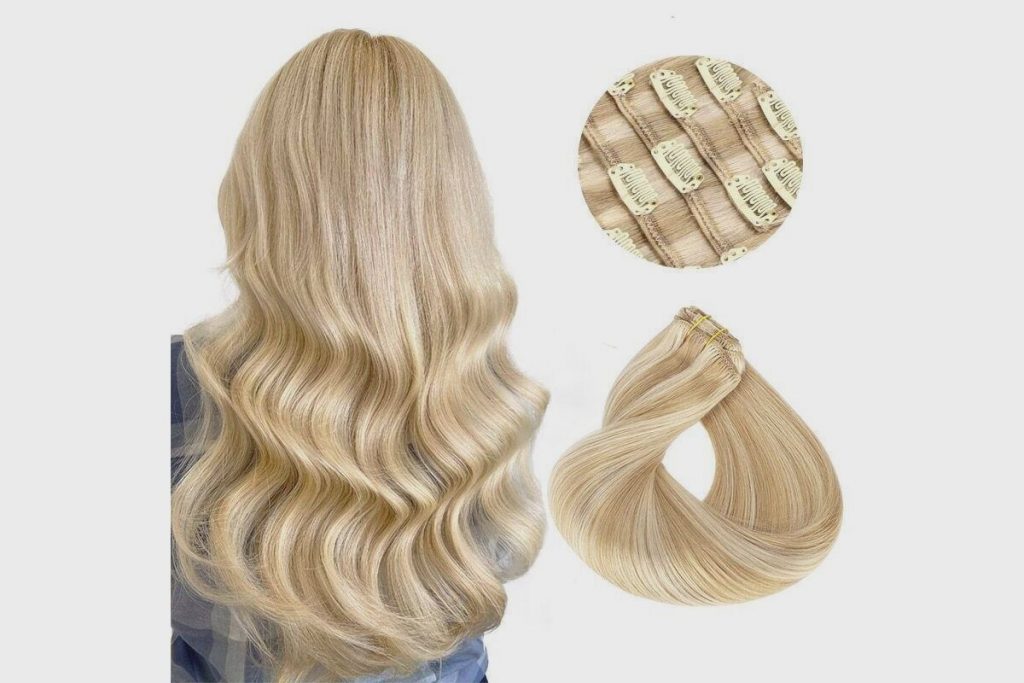
1. Clip-in Hair Extensions
Definition and features
As you might have figured out from the name, clip-in hair extensions are temporary extensions attached to your natural hair using clip-ins. These types of extensions can be easily attached and detached, making them a favourite choice of many users.
General features of clip-in hair extensions include easy application, versatility, convenience, seamless blending, and low maintenance.
Application process
Applying a clip-in hair extension is a DIY process that can be done from your home without professional assistance. To firmly attach your clip-in hair extensions, take the following steps:
- Brush your hair: Before attaching clip-in extensions, brush your natural hair to remove tangles and knots. Also, brush the extensions for a sleek appearance.
- Section your hair: Use a comb to section your hair, creating a base for attaching the clip-in extensions according to your desired style.
- Attach clip-in extensions: Open the clips gently and attach them to the roots of your hair in your desired position. Snap the clips shut securely, avoiding excessive tightness to prevent damage to your natural hair.
- Blend the extensions: After clipping the extensions securely, use a brush or comb to blend them with your natural hair for a natural and smooth appearance.
- Style as desired: After blending, style your hair as desired using heat styling tools or any hair accessories you prefer.
Pros
- Easy to apply and remove
- Non-damaging to natural hair
- Cost-effective.
Cons
- Limited style options
- It May be visible if not applied correctly.
- Not suitable for extremely fine or thin hair.

2. Tape-in Hair Extensions
Definition and features
These extensions come pre-bonded with adhesive tape and are glued to each side of your hair with a heated tool. Popularly known as a semi-permanent extensions, these extensions are durable when properly taped in and can last up to two months.
Some of the best features of tape-in extensions are their natural look, versatility, durability, and comfort.
Application process
For proper placement and to ensure a secure bond between your tape-in extensions and natural hair, the application process will require the assistance of a professional stylist. To install your tape-in extensions, do the following:
- Wash your hair: Ensure your hair is washed properly and free of hair products that could result in greasiness.
- Section your hair: Use a comb to make a horizontal part, as the extensions will be applied to the lines made by the part. You can use hair clips to separate the sections and keep the rest of the hair out of your way.
- Attach tape-in extensions: Place the extension underneath a section of your hair, advisably close to the roots. Now press the tape-in extensions firmly against your scalp to secure it in place.
- Repeat the attaching process of the extensions around the other sections of your hair until you achieve your desired result.
- Now you can blend the extensions with your hair for a more natural look.
- Style your hair as desired.
Pros
- Lightweight and comfortable
- Natural-looking
- Suitable for fine hair.
Cons
- It may require frequent maintenance.
- Limited style options
- Can be damaging if not removed properly.
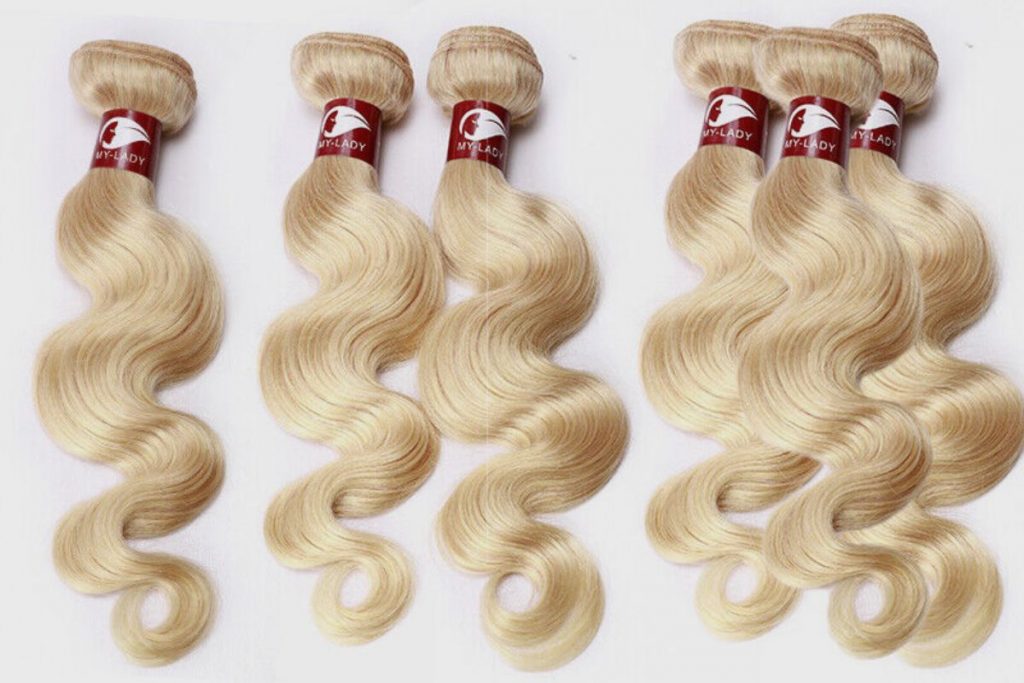
3. Sew-in Hair Extensions (Weaves)
Definition and features
Popularly known as weaves, these sew-in extensions are one of the oldest and most popular hair extensions. With the use of a needle and thread, these extensions are sewn in into your already-weaved hair, thus completely tucking away your natural hair.
Sew-in hair extensions have many great features, such as durability and versatility. One of the best things about these extensions is that they help protect and boost hair growth. This is because these extensions don’t cause any strain to your natural hair and protect hair from heat styling.
Application process
Technically, it is possible to install sew-in extensions by yourself, but it is generally recommended that you have them installed by a professional hairstylist. The application process is listed below:
- Braid your hair: Braid your natural hair into cornrows that lay flat against your scalp so that they serve as a base for installing your extensions.
- Secure the wefts: To do this, you have to use a needle and thread to sew the wefts of the hair to the weaved cornrows. The needle is then passed through the weft and the braids, creating a secure attachment. This process is repeated along each row of braids until the desired amount of extensions is achieved.
- Styling: Now that the wefts of the sew-in hair extensions have been firmly secured to the braids, you can style your hair as desired.
Pros
- Long-lasting
- Versatile styling options
- Suitable for all hair types.
Cons
- It Can be time-consuming to install and remove
- It may cause tension and damage to natural hair.
- Requires professional installation and removal.
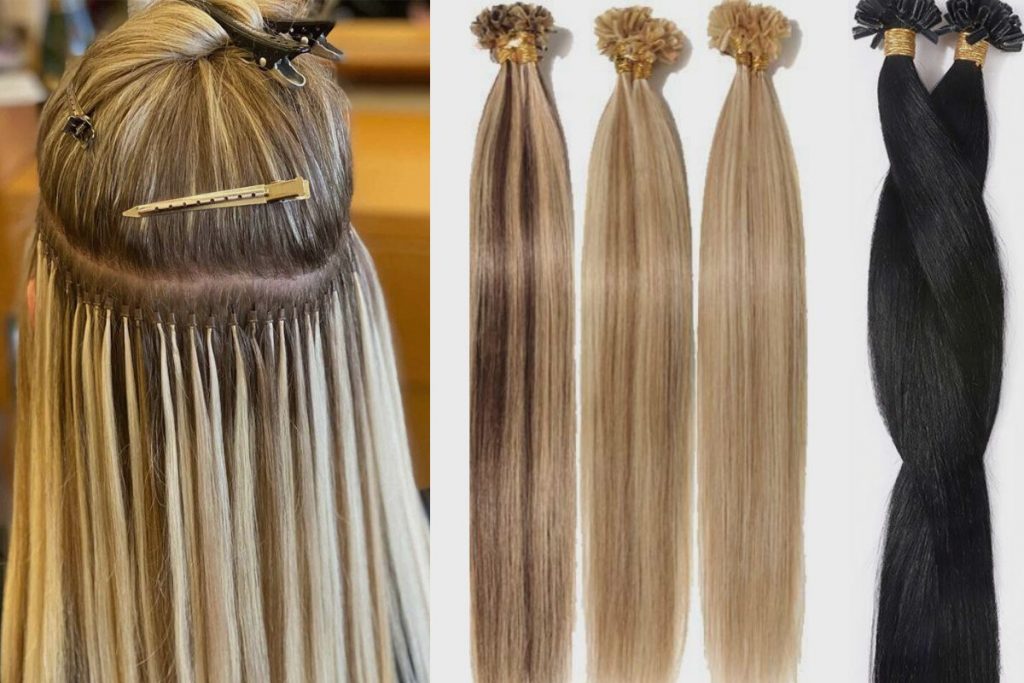
4. Fusion Hair Extensions
Definition and features
Also referred to as pre-bonded or bonding extensions, these hair extensions are attached to your natural hair using various adhesives, such as glue.
They are particularly suitable for individuals with thick hair and can be applied to hair that is at least 6 inches in length. Unlike tape-in extensions that come in wefts, fusion hair extensions come in strands of hair to give users a more natural look when properly installed.
Compared to other hair extensions, fusion hair extensions provide a more natural look. Some other features of these extensions include their low maintenance and versatility.
Application process
The process of applying fusion extensions to your hair is a technical process and should be installed by a professional hairstylist. To apply for a fusion sew-in extension, take the following steps:
- Wash your hair: Ensure that your natural hair is thoroughly washed and dried.
- Attach strands of your extensions: Now, you can apply the Keratin bond near the root of a small section of your natural hair using a specialized heating tool. When the bond is heated, it becomes more flexible and can be wrapped around a small section of the extension hair.
- This process should be repeated strand by strand until all your desired extensions are in place
- After completing this process, you can blend the extensions with your natural hair and style as desired.
Pros
- Most natural-looking
- Long-lasting
- Allows for versatile styling options.
Cons
- Expensive
- Time-consuming installation process
- It can cause damage to natural hair.
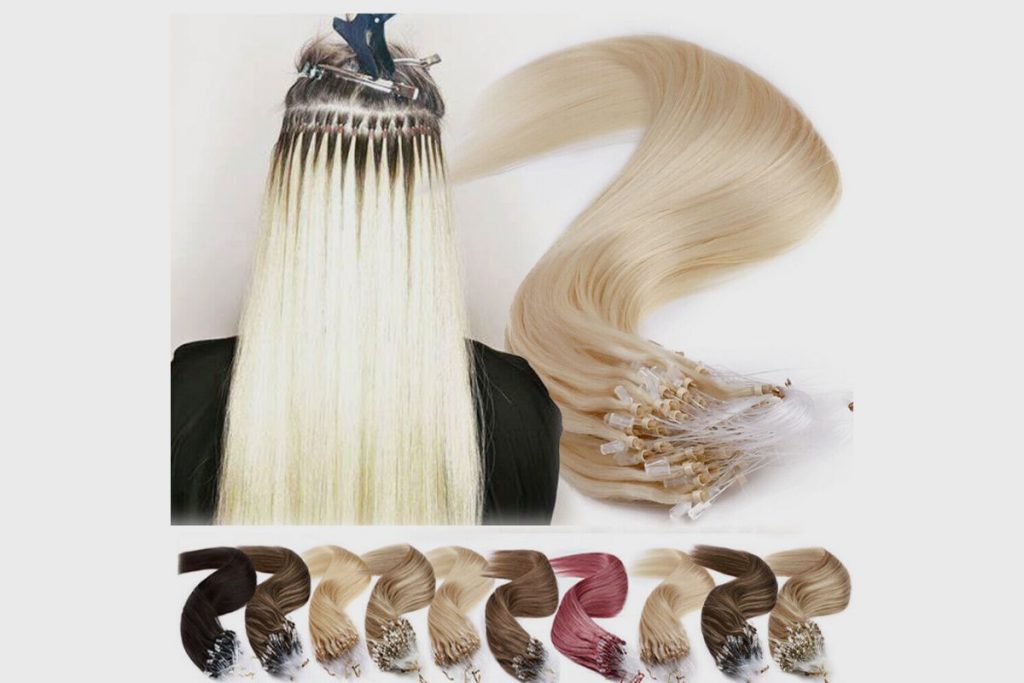
5. Micro-link Hair Extensions
Definition and features
Micro-link hair extensions also referred to as microbead or microtube extensions, utilise tiny beads or tubes to attach the extensions to your existing hair.
These beads or tubes are usually made of aluminium or copper and are coated with black or brown ink to blend seamlessly with your hair colour. These extensions offer a fantastic way to enhance your hairstyle and add volume, length, and texture to your locks.
Some key features of micro-link hair extensions include their reusability, which makes them a cost-effective option, lightweights, and versatility.
Application process
Just as with most of the hair extensions listed above, a professional stylist’s service is required to install micro-link extensions. To install these extensions, take the following steps:
- Section your hair: divides your hair into small sections, starting from the bottom and working their way up. Each section is securely clipped or tied away for a systematic application process.
- Extension Attachment: Taking a small section of your natural hair, the stylist threads a micro-link ring onto the hair shaft near the root. The extension strand is then slid through the ring, and special pliers are used to clamp the ring securely.
- Repeat this process for each extension for a natural look.
- Blend and Style as desired: After attaching all the extensions, you can blend them with your natural hair by trimming and shaping them to create a blended appearance. You can then style your hair as desired, including using heat styling tools.
Pros
- Long-lasting
- Allows for versatile styling options
- It can be easily adjusted or moved up.
Cons
- It can be time-consuming to install
- It may cause damage to natural hair
- Requires regular maintenance appointments.
When choosing hair extensions, several factors must be considered to ensure that you make the best decision for your needs. Here are some important factors to keep in mind:
Hair type and texture: Different hair extensions work best for different hair textures, so it is best to know the one that will suit you best. For instance, sew-in extensions are a great choice for people with thick hair, while clip-in extensions are suitable for almost any hair type. And that is why you have to take into consideration the texture of your hair so that you can choose extensions that will blend easily with it for a natural look.
Desired length and volume: Every extension has different lengths and thicknesses, but you want to choose the one that will help you achieve your desired look. If you like long and full hair, then you must know that they require more maintenance.
Budget: Hair extensions vary depending on quality and type, so you must set your budget and check for options within your price range. Be assured that you will find the best hair extension for you without having to break the bank. When considering the budget for your hair extensions, it is best that you also factor in installation and maintenance costs.
Maintenance and lifestyle: Your lifestyle determines how long your hair extensions will last. For instance, if you are an active person that frequently engages in physical activities, you must know that some hair extensions are more prone to damage from these activities and, therefore, will require extra maintenance.
On the flip side, if you do not have time for frequent styling, then clip-ins are your top choice, as they can be easily attached and detached. But if you enjoy changing your styles more often, then the sew-ins and tape-ins are your top choice, as they offer more versatility and durability.
Conclusion
In conclusion, having extensively discussed the different types of hair extensions like clip-in, tape-in, sew-in, fusion, and micro-link, it is now up to you to select the best one for you. By now, you know that each hair extension has distinct features that cater to your hair texture, length, and of course, your budget.
Selecting the best hair extension for yourself is important in achieving a seamless, natural look while allowing you to get creative and experiment with different styles.
Although installing some hair extensions can be done in an easy DIY process, it is best that you consult with a professional stylist for a skilful application that will help you achieve optimal results, minimising the risk of discomfort and damage to your natural hair.
FAQs – Frequently Asked Questions about Types of Hair Extensions
Q: What are some common types of human hair extensions?
A: Some common types of human hair extensions include pre-bonded hair extensions, tape extensions, wefts of hair, halo hair extensions, Microlink hair extensions, and Weft hair extensions.
Q: How can I make my finer hair thicker using extensions?
A: You can use real hair extensions such as wefts of hair or tape hair extensions to add volume and thickness to your finer hair. These extensions are added to your actual hair, helping it look fuller.
Q: What are pre-bonded hair extensions?
A: Pre-bonded hair extensions are a type of semi-permanent hair extensions that are attached to the hair using a special adhesive glue. They include keratin bond extensions and fusion bonds, which are attached to individual strands of hair.
Q: Can synthetic hair extensions cause scalp irritation?
A: Yes, some people with sensitive scalps may experience irritation from synthetic hair extensions due to the material used or the adhesive glue. It’s always best to do a patch test before the full application.
Q: What are the pros and cons of using synthetic hair extensions?
A: Synthetic hair extensions are often an affordable option compared to real hair extensions. They come in a wide range of colours and can mimic the look of real hair. However, they may not blend as seamlessly with natural hair, can’t withstand high heat, and might cause scalp irritation in some individuals.
Q: What are tape extensions, and how are they applied?
A: Tape extensions are a popular type of hair extension that involve attaching sections of hair to a strip of special adhesive tape. They are applied by sandwiching a thin piece of your actual hair between two extensions, making them less noticeable and more comfortable to wear.
Q: Can hair extensions contribute to hair loss?
A: Yes, if not applied and removed correctly, hair extensions can cause hair loss. Tight ponytails or improperly applied extensions can lead to hair breakage and fallout at the roots. It’s always best to have extensions applied and removed by a professional to avoid this.
Q: What are the benefits of Luxy Hair Extensions?
A: Luxy Hair Extensions are renowned for their quality. They offer a wide range of natural hair extensions, including Remy hair, which is a high-quality type of real hair. Luxy offers a range of colours and types, including ponytail extensions, to suit various hair types and styles.
Q: How are individual bonds and fusion bonds different?
A: Individual bonds refer to methods like micro rings or micro loop hair extensions, where extensions are attached to small sections of your own hair using a special tool. Fusion bonds, on the other hand, are a type of pre-bonded extension where keratin (a natural protein found in hair) is used to bond the extension to your hair.
Q: Are there specific shampoos or styling products recommended for hair extensions?
A: Yes, it is recommended to use a special shampoo and conditioner formulated for hair extensions. These products are usually sulfate-free to prevent the extensions from drying out. Also, heat protectant sprays are recommended when styling extensions to prevent damage.
Q: What is the difference between weft hair extensions and individual strand extensions?
A: Weft hair extensions come in large pieces, or “wefts,” that are applied to the hair in rows rather than as individual strands. This can give a fuller look and is often used for weave hair extensions. Individual strand extensions, like micro rings or pre-bonded hair extensions, are attached to small pieces of your own hair for a more natural look.
Q: Can hair extensions be used for shorter hairs?
A: Yes, hair extensions can be used to add length to shorter hair. However, for a natural look, it’s recommended to choose extensions that blend well with your hair type and colour.
Q: Are there temporary forms of hair extensions?
A: Yes, there are several temporary forms of hair extensions, such as clip-ins and halo hair extensions. These can be easily attached and removed without the need for professional help.
Q: What is Remy’s hair?
A: Remy hair refers to human hair extensions where all hair strands are aligned in the same direction from root to tip, making them less prone to tangling. This is a high-quality type of real hair used in extensions.
Q: What are the benefits of using natural hair extensions over synthetic ones?
A: Natural hair extensions, made from real hair, blend better with your own hair and can be styled, dyed, and treated just like your own hair. They also tend to look more natural and are generally more durable than synthetic extensions.
Q: What are micro loop hair extensions?
A: Micro loop hair extensions, also known as micro ring or bead hair extensions, are a type of extension where individual strands of extension hair are attached to small sections of your own hair using a small loop and clamp system.
Q: How are hair colours determined for hair extensions?
A: Hair extensions come in a wide range of colours to match your natural hair. Some brands also offer multi-tonal extensions to blend seamlessly with a range of hair colours. A hair professional can also custom-dye real hair extensions to match your hair perfectly.
Q: What is a halo hair extension?
A: Halo hair extensions are a type of temporary hair extension that is worn like a headband. The extensions hang from a clear wire that is hidden by your own hair. They are easy to use, cause no damage and can be removed at any time.
Q: Can curly hair be used with extensions?
A: Yes, there are extensions designed specifically for curly or textured hair. These include both synthetic and real hair extensions.
Q: How does the quality of extensions affect hair health and growth?
A: High-quality extensions, when applied and cared for correctly, are less likely to cause damage to your hair or inhibit healthy hair growth. Lower-quality extensions or improper application can cause hair breakage or even hair loss.
Image Gallery – Types of Hair Extensions






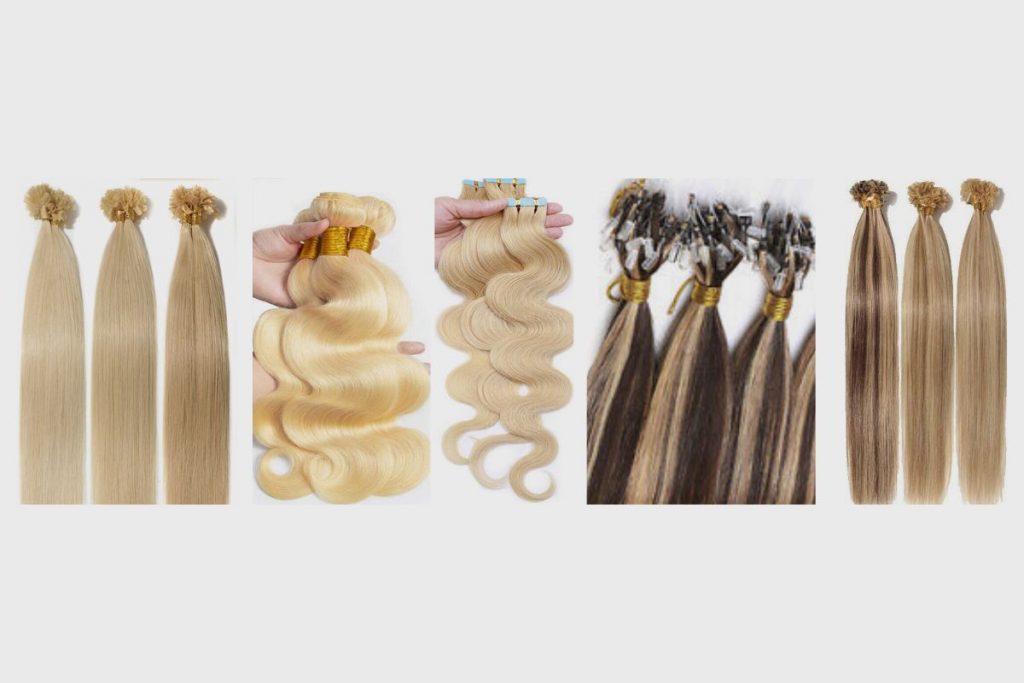
Related Posts to Read:
References:
- About Hair Extension (Link).
